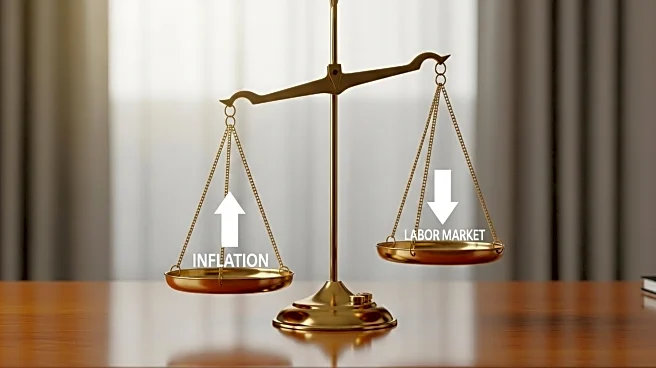What's Happening?
The Federal Reserve is under pressure to respond to a deteriorating labor market following the release of the August nonfarm payrolls report. The report showed only 22,000 new jobs added, significantly below the forecast of 75,000, with the unemployment rate rising to 4.3%. This has led to increased speculation about a potential rate cut at the Fed's upcoming September meeting. The CME FedWatch tool indicates a high probability of a 25-basis-point rate cut, with a smaller chance of a 50-basis-point cut. Despite these expectations, financial markets have shown limited optimism, with major stock indices experiencing modest gains and cryptocurrencies like Bitcoin and Ethereum failing to capitalize on the sentiment.
Why It's Important?
The weak jobs data and potential rate cuts have significant implications for the U.S. economy and financial markets. A rate cut could stimulate economic activity by lowering borrowing costs, but it also raises concerns about inflation and the Fed's ability to balance its dual mandate. The muted market reaction suggests lingering concerns about economic resilience and fiscal policies. Investors are closely watching upcoming inflation data, which will be crucial in assessing the Fed's next steps. The situation highlights the delicate balance the Fed must maintain between supporting employment and controlling inflation.
What's Next?
Investors are awaiting the release of key inflation data, including the Producer Price Index (PPI) and Consumer Price Index (CPI), which will provide further insights into the Fed's decision-making process. Analysts are divided on the implications of the labor data, with some predicting a cooling economy and potential recession, while others focus on inflationary pressures. The Fed's actions will be closely scrutinized as it seeks to prevent an economic downturn without exacerbating inflation.











